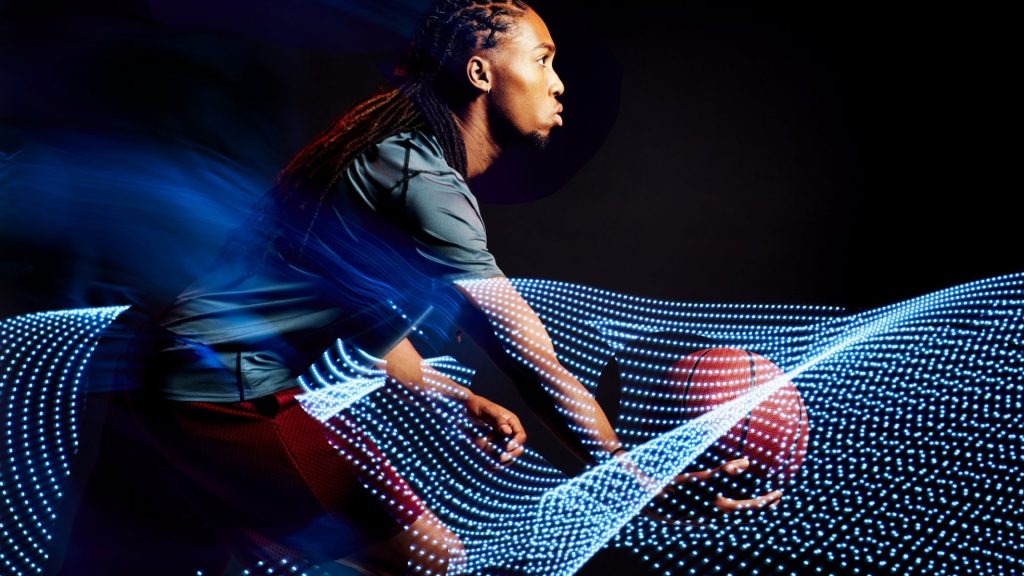
Welcome sports enthusiasts and science aficionados! Have you ever wondered what goes on behind the scenes to make athletes perform at their best? From heart-pounding races to gravity-defying jumps, there’s an incredible amount of science and technology fueling every sporting event we watch. Join us as we pull back the curtain and dive into the fascinating world of sports performance. Get ready to be amazed by cutting-edge innovations that are reshaping the way athletes train, compete, and push the boundaries of human potential. So strap on your seatbelts as we take you on a thrilling journey through the unseen forces propelling our favorite games forward. Let’s uncover how science and technology are turning ordinary humans into extraordinary champions!
What is sports?
Sports are a popular pastime enjoyed by people of all ages. They can be enjoyed both indoors and outdoors, and involve physical activity and competition. Athletics, swimming, cycling, golf, tennis, and track and field are just a few examples of sports that take place on land or in water. Many sports require special equipment such as balls, bats, racquets, or skis.
To perform at their best, athletes need to have good physical fitness as well as the skills required for their sport. Physical fitness is the ability to carry out regular physical activities without getting injured. It includes things like strength and stamina, flexibility, agility, balance, and breathing control. In order to improve their skills and fitness, athletes often use technology such as training videos or digital devices to simulate real-world conditions.
Technology has also played a role in helping athletes achieve better performance. Devices such as motion tracking systems allow coaches to track the movements of players in real time so they can identify any mistakes or improvements that need to be made. wearable tech such as heart monitors or GPS tracking devices can help doctors diagnose injuries early on so they can be treated properly and prevent long-term damage.
How does sports affect our physical and mental health?
Sports can have a tremendous positive impact on physical and mental health, according to recent research. In fact, sports participation has been shown to be one of the most effective interventions for preventing obesity and chronic health conditions such as cardiovascular disease, type 2 diabetes, and cancer.
Physical activity has been linked with improved mental well-being, including increased self-esteem and reduced anxiety and depression symptoms. It also helps keep our brains active and functioning into old age, leading to better cognitive function and decreased risk of dementia.
The benefits of sports participation go beyond our physical health though. Studies have shown that playing sport can help build social relationships and teamwork skills, improve problem solving abilities, increase confidence levels, reduce feelings of loneliness, and foster a sense of community.
What are the benefits of sports?
There are many benefits to participating in sports. For starters, it can be a fun and healthy way to stay active. It can also help people develop teamwork skills and socialize with others. Additionally, playing sports can improve cognitive function, motor skills, and academic performance. In fact, research has shown that children who participate in sport have a lower risk of developing chronic diseases such as obesity and heart disease later in life.
One of the main technologies powering sports performance is GPS tracking. Sports scientists use this technology to monitor athletes’ movements and track their progress over time. This information helps coaches make better decisions about how to train them and optimize their performance. GPS tracking also helps athletes track their progress against previous performances, which can give them motivation to keep improving.
Another important technology used in sports is video analysis software. This software helps coaches see how an athlete performs during a game or practice session by capturing footage from multiple angles. This data is then used to make decisions about how best to coach them. Video analysis software is especially useful for coaching football, soccer, hockey, and other team sports where players move around a lot.
Integrating these technologies into sports training provides huge benefits for athletes and their coaches alike. By using GPS tracking and video analysis software, coaches can improve the efficiency of their training programs while monitoring athlete progress at all times. This allows them to tailor training specifically for each athlete’s needs and maximize their performance potential
How do we measure sports performance?
There is no single answer to how we measure sports performance. Performance can be evaluated in a number of different ways, including by looking at wins and losses, goals scored, or times achieved in a race or competition. Each of these measures has its own strengths and weaknesses. For example, goals scored can be an important indicator of offensive prowess, but they do not always reflect how well a team performed defensively. Times achieved in a race or competition can provide more complete information about how well an athlete performed relative to the other participants, but they can also be more subjective.
One common measure of sports performance is the time it takes for an athlete to complete an event. This time can be divided into two categories: absolute time and relative time. Absolute time refers to the actual amount of time that the athlete spends on the track or field competing. Relative time reflects how long other athletes have been able to complete the same event compared to the athlete being measured. For example, if an athlete finishes an event in 10 minutes flat, their absolute time would be 10 minutes, but if another athlete finished the same event in 20 minutes, their relative time would be double (20 minutes/10 minutes).
Time is only one measure of sports performance; there are many others that could be used depending on the type of sport being analyzed. One way to measure sports performance is by using biomechanical data collected during games or competitions. This data can include measurements such as heart rate, respiration rate,
How does technology impact sports performance?
Technology has long been a part of sports, from the use of cameras to track athletes’ movements to tracking statistics and providing feedback on performance. But how does technology impact sports performance?
There are many different ways that technology can help athletes perform better. For instance, wearable devices can monitor physical activity and provide real-time feedback on how active an athlete is during their workout. This information can help athletes make adjustments to their exercise routine to optimize their performance.
Another way technology impacts sports performance is through the use of tracking systems. These systems are used to collect data on the location and movement of players on the field or court. This information is often used to create visualizations that show how an athlete moves around the playing surface and how effective their strategies are. By understanding these movements, coaches can make better decisions about player positioning and strategy.
In addition to monitoring players’ movements, technology also helps coaches communicate with players remotely. For example, video teleconference tools allow coaches to talk directly with players as they play games or practice sessions. This allows for more individualized coaching than would be possible in person, leading to improved player development Over time, remote communication will likely become even more important as teams increasingly move away from traditional face-to-face meetings during training camp and competitions.






